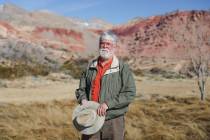End of the line for Mark Hall-Patton
MARK HALL-PATTON faces the camera, ready to reveal nuggets of wisdom about the colorful historical events that once took place in Las Vegas and Clark County.
In this era of COVID-19, he wears a red kerchief over his mouth, looking a bit like an aging Billy the Kid — that is, if the Wild West outlaw had also worn a wide-brimmed Amish hat and long, white beard.
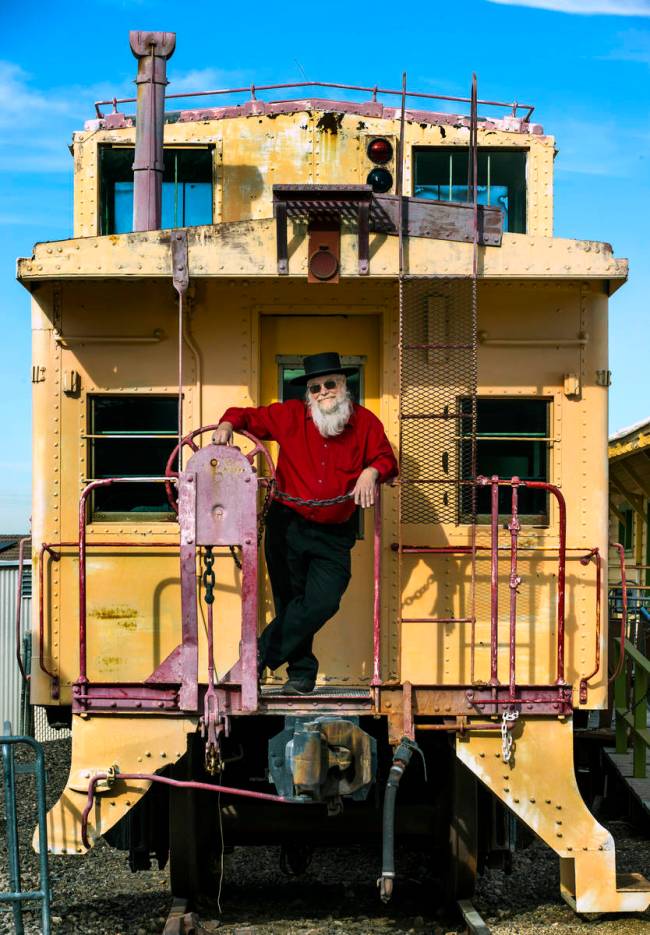
On this morning, the longtime administrator of the Clark County Museum, is hosting his weekly live Facebook Q&A for those history buffs trapped at home during the pandemic.
A woman wants to know if Las Vegas casinos had Cold War-era bomb shelters. Hall-Patton patiently explains how most casinos had basement rooms reserved for that purpose and that authorities even identified abandoned mines in the area to house people in case of a nuclear attack.
Then a man asks: Why is Nevada known as the Silver State?
“Nevada at once became known for its silver as a result of the famed Comstock Lode,” Hall-Patton says cheerily. “And, well, the name just stuck.”
Rather than a stuffy academic exchange, the event feels more like a virtual autograph session for a humble administrator turned international celebrity. For countless fans, Hall-Patton has become the much-revered “Beard of Knowledge,” the most-recognized public museum spokesman on Earth.
“People see me as accessible and excited about history, which I am,” he says. “That’s just me. I’ve been a geek all my life.”
Since 2009, Hall-Patton has played a cameo role in 200 episodes of “Pawn Stars,” the History channel’s reality show whose quirky, off-the-cuff bargaining scenes between opportunistic sellers and jaded buyers quickly turned it into one of cable television’s most popular programs, now dubbed into 32 languages.
Hall-Patton has become the show’s most-consulted expert, bringing him such acclaim that fan letters and emails daily pour into his Henderson museum office. He’s recognized at gas stations, hounded in restaurants, called out on the street. On a visit to Ireland and Luxembourg some years back, he couldn’t buy his own beer inside any Irish pub. The lads just wouldn’t let him.
Now 66, Hall-Patton is about to do something many find unfathomable. In the spring, he plans to retire from his museum post. While he still will make “Pawn Stars” appearances, the move will make him decidedly less accessible to followers who flock to meet him inside the facility’s hallways.
A few years ago, colleagues posted a life-size cardboard cutout of Hall-Patton as a consolation to fans who came to the museum in search of the friendly figure they normally encounter in the comfort of their own living rooms.
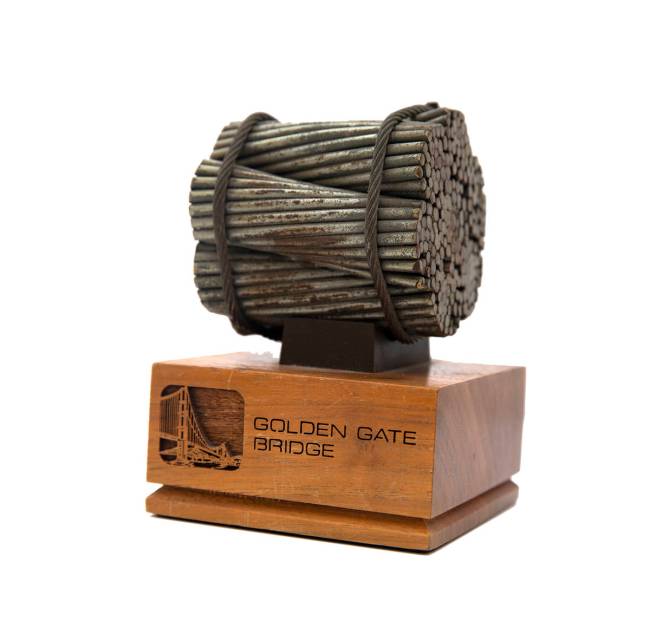
During the recent half-hour Q&A, queries turn decidedly personal. Questioners want a piece of the man himself: How many cats does he have? (One.) Where does he buy his Amish hats? (Mostly online.) When did he start growing his beard? (1976.) Do strangers mistake him for a rabbi? (Yes.)
Most grasp the fact that he is not a normal museum administrator.
The Santa Ana, California, native is a lifelong collector of stuff, a history hoarder with highly specialized pursuits — odd items that over the years have included old beer cans and vintage postcards, museum guard badges and decorative fraternal swords, not to mention a personal library of more than 20,000 historical volumes and counting.
Hall-Patton lives within the realm of books, in the course of his research of all things past and their vivid retelling. For the past 40-plus years, he has traveled the nation to carve out his own place in the rarefied realm of running history museums.
Hall-Patton’s story is one of stubborn persistence, about settling upon a professional path and sticking to it, even during painful periods of unemployment. It’s also about learning how to live in the public eye and sacrificing your privacy for the good of the museum, that hallowed realm, which has become his raison d’être.
Thanks to Hall-Patton’s celebrity, the Clark County Museum — which has no advertising budget — saw its pre-pandemic attendance soar 70 percent.
So, how on earth is the county going to replace him?
“His are big shoes to fill,” said Jeanne Brady, a former guild president. “He knows so much about the area’s history.”
County officials do have their work cut out for them, agreed Michael Green, a UNLV associate history professor. “People see Mark on TV and forget that he had a day job,” he said. “My hope is that the county can bring in someone who shares his commitment to the community, luring museum patrons into that little jewel in the desert.”
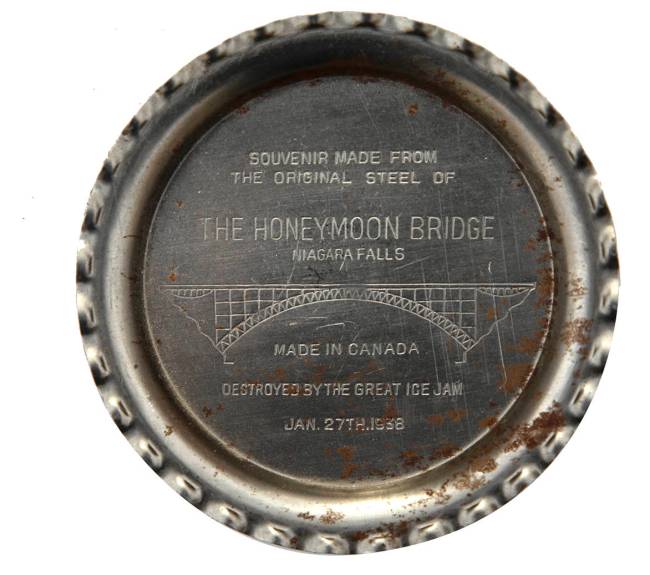
Like any seasoned performer, Hall-Patton knows when it’s time to make his exit. After 28 years in Las Vegas, he says, he’s accomplished what he set out to do at the museum. Still, some people can’t quite accept that he’s leaving — like the host of a recent retirement seminar he attended.
“I know who you are,” the man said. “You can’t retire!”
“Oh, yes, I can,” Hall-Patton replied. “I’ve been doing this job for 40 years.”
Frankly, he deserves a bit of privacy, he says, time for his own pursuits. “I’m not dying,” he told the instructor. “I’m just retiring.”
‘I am a museologist’
Hall-Patton was one of three children born to Navy veteran Arthur “Pat” Patton and his wife, Mary Jane, who worked as a nurse.
He was an instant collector. When he was 5, his father told him to empty the contents of his pockets into a grocery bag. The result: 5 pounds of everyday stuff, including an old lock the kid had found interesting.
By 13, he already was playing the role of amateur museum curator. He’d force his younger siblings — sister Catherine and brother Michael — on tours of odd home displays he’d arranged, that included a .50-caliber machine gun round turned lighter. Both brothers developed their own passions: Michael later played bass for nationally known punk band the Middle Class.
While he studied for his history degree at the University of California, Irvine, Hall-Patton held the first of the working-class jobs that would later give him an understanding of the backgrounds of people who would patronize his museums. He sold patio furniture and worked the graveyard shift at a local mortuary.
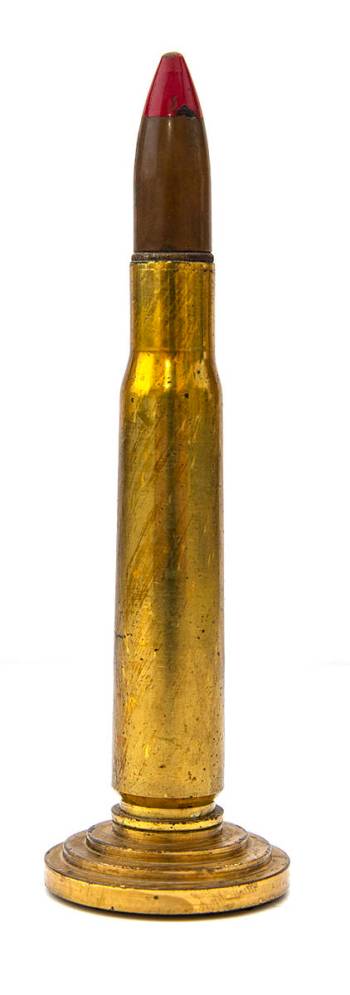
He did a year of post-graduate work in American history and museum studies at the University of Delaware.
Finally finished with school, he landed a position at the Bowers Museum in 1977, in his hometown, where he worked as a part-time security guard and later as a grants developer. He also married the girl he’d met in high school, a fated union that has lent the museologist his last name.
Fiancée Colleen Hall, a budding academic in her own right, didn’t want to surrender her last name, so the couple decided to call themselves Hall-Patton. Reversing the order to Patton-Hall, he says, would have made it “sound like a residence dorm.”
After his grant-funded position ended at the Bowers, Hall-Patton worked for three years at the Siouxland Heritage Museums in Sioux Falls, South Dakota. But he lost his grant funding there and once again became jobless, this time with a mortgage to pay.
For months, he worked on the assembly line at a microwave factory, reading 16th century satire on breaks and learning something about himself. “I was a horrendous assembly line worker,” he recalls. Looking around at men who did their job well, he sighed, “I saw how incompetent I really was.”
The couple returned to California in 1983, where Hall-Patton counted election ballots and became a manager trainee at an automotive parts store. Friends began asking tough questions. His father urged him to take a training course to become a bus driver.
“Maybe you need to get into something else, because it doesn’t look like a career in museums is going to work out,” people said.
“No,” Hall-Patton responded. “That’s not who I am. What I am is a museologist. And that’s what I am going to continue to be.”
Finally, in 1984, he landed a position as director of the new Anaheim Museum and never looked back, later moving on to a job at the San Luis Obispo County Museum, a post he held for eight years.
But Las Vegas eventually beckoned. In 1993, Hall-Patton was named the administrator of the Howard W. Cannon Aviation Museum inside McCarran International Airport. He moved to Henderson with his wife and two children — 5-year-old Joseph and 2-year-old Ellen — and bought a house in a residential community where he and his wife live to this day.
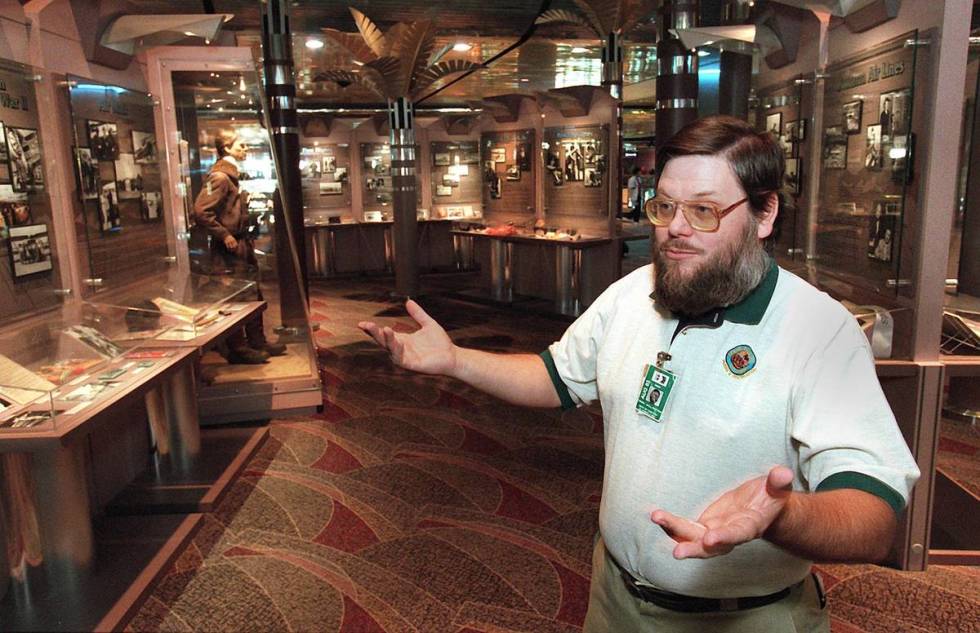
The ‘Beard of Knowledge’
By then, Hall-Patton was a man surrounded by collectibles such as first-edition books, chunks of the Great Wall and Golden Gate Bridge made into paperweights, a candleholder fashioned out of a piece of the London Bridge.
“I don’t collect easy things,” he says. “They have to be unusual, objects I can use to tell a story.”
He has, for example, hundreds of enforcement badges — not the police type, but those worn by guards and ticket-takers at zoos, museums and libraries. And by church ushers. “Think about it,” he says. “How tough does a church have to be for ushers to wear a metal badge like a cop?”
Hall-Patton’s son, Joseph, recalls that the family home could be a dangerous place. “One of our constant annoyances was the book-o-launch, when towering stacks of books would just topple over,” he says. Especially when the family cat, who negotiated by sense of touch since it was blind in one eye, slunk past a wobbly stack.
Joseph and his friends suspected that behind his father’s easy chair sat some mysterious black hole to an alternate universe of stuff. “I once read about this piece of gear the Army called a Jeep cap,” he says. “I asked my dad where I could find one, and he literally reached behind his chair and produced one. He did that all the time.”
And through the annoying history lessons that took the place of bedtime tales, the father taught the son a valuable lesson. “History is a story,” says Joseph, now a Ph.D. candidate in history at the University of New Mexico. “My father made that clear.”
The younger Hall-Patton has followed that lead. His YouTube channel, “The Cynical Historian,” where he tells his own tales, has more than 150,000 subscribers.
In 2009, three years after he was promoted to administrator of the Clark County Museum, Hall-Patton struck publicity gold: He began appearing as an authenticator on “Pawn Stars.”
“They sought me out,” he recalls. “The show needed experts, and somebody said, ‘Call the guy at the museum.’ So they did, and it turned out I had no shame on camera.”
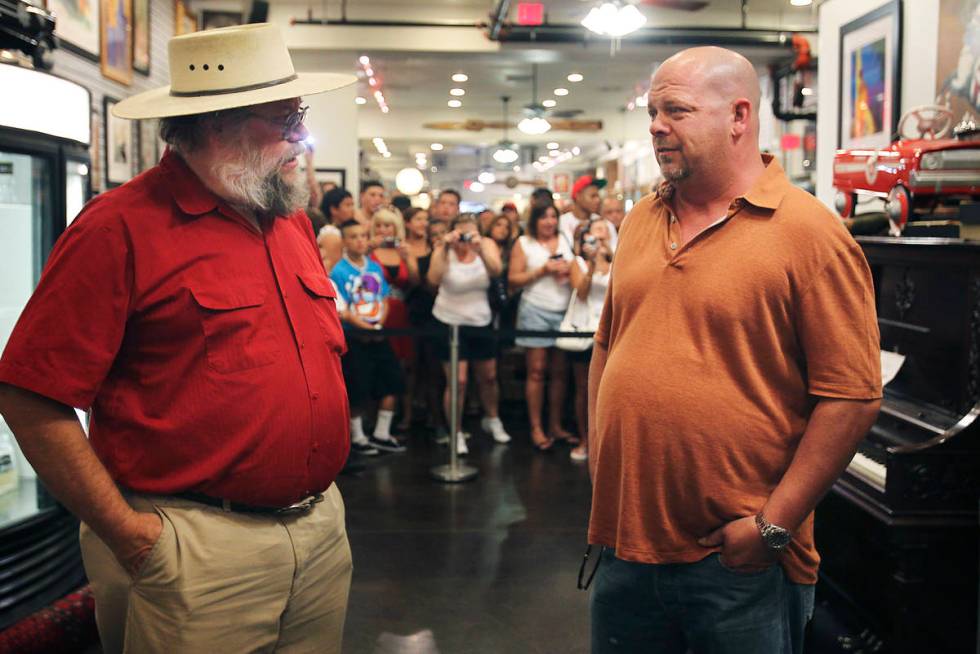
Hall-Patton was an instant hit for just being himself — a chatty, avuncular man with a booming baritone and the same grandfatherly beard he’d begun growing at age 22. He also wore a series of distinctive Amish hats — a look he’d fallen in love with in college while attending farm auctions in the Pennsylvania hill country. On TV, he was anything but pedantic, but he drew the line on commercialism — relating only the fascinating backstory of an object while never offering a monetary value, because that’s just not what a museologist does.
“Pawn Stars” show host Rick Harrison says, “On camera, I only know so much, and so we have Mark, who knows everything. The guy is just brilliant. He’s the only rock star museum curator I know.”
The crew reveled in Hall-Patton’s everyman zaniness. One director even talked of producing a short horror film in which Hall-Patton invites unsuspecting visitors to his museum — victims who later turn up as statues in his growing House of Wax. “The joke,” Hall-Patton explains, “is that I’m such a good-natured collector that I had to have this creepy alternative ego.”
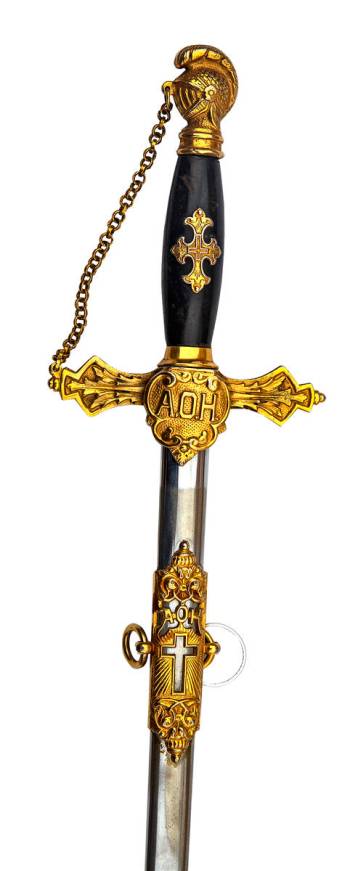
One day, Hall-Patton’s bearded visage inspired a long chain of postings on Reddit, with one writer saying that the museologist wasn’t really that smart, that he was just the current owner of the mystical “Beard of Knowledge” handed down by such visionaries as Leonardo Da Vinci and Michelangelo.
When Harrison used the phrase on the show, it stuck.
There was another Hall-Patton touch that viewers noticed — the red shirts he wore as a salute to his membership as a “Clamper,” part of the eccentric E. Clampus Vitus fraternity dedicated to the preservation of the heritage of the American West, a group whose motto is “Credo Quia Absurdum,” or “I believe because it’s absurd.”
Hall-Patton is a former Clamper Noble Grand Humbug now recognized as a Dead Salmon because “after a few years as an ex-Humbug your advice begins to stink.”
Members have handles such as “Chainsaw” or “The Butcher.” Hall-Patton’s nickname, of course, is “the Beard of Knowledge.”
“Mark finds everything fascinating,” says fellow Clamper Dennis Robinson, who is also Hall-Patton’s accountant. “One day, he said, ‘So, tell me something about the history of accounting.’ And I said, ‘Are you serious?’ ”
He was. He loved that modern-day auditing standards evolved out of scandals, and later gave Robinson accounting manuals from the 1800s and an original Forbes magazine from the 1920s on the history of the Big Eight accounting firms.
“He is,” Robinson laughs, “the Beard of Knowledge.”
Still, Hall-Patton has paid a price for his fame: lack of privacy.
Colleen Hall-Patton, a UNLV sociologist specializing in women’s studies, years ago wrote an academic paper on her husband’s celebrity status — how fans stopped him in the grocery store and waved from passing cars, how women wanted to touch his beard and children tugged at his coat.
“Unfortunately, Mark has gotten the worst of both worlds,” she says. “He got the fame, but without any of the fortune.”
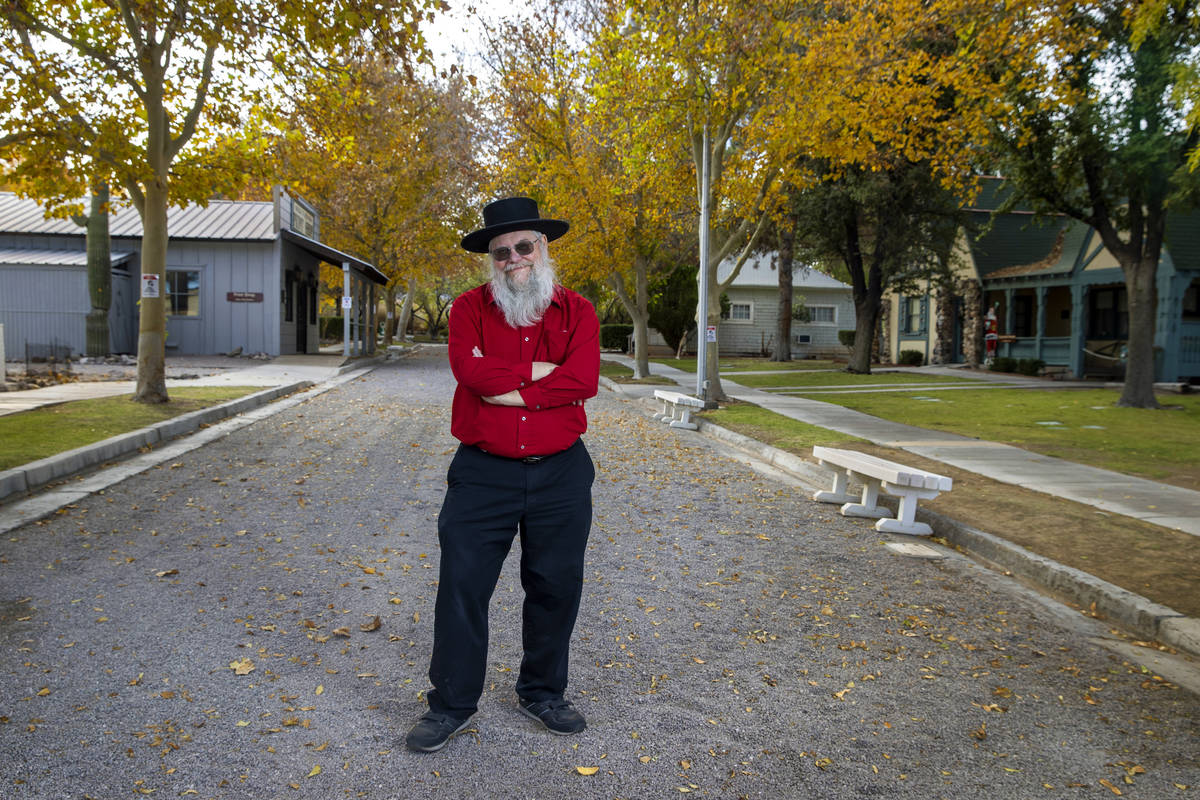
Retirement will be bittersweet
Hall-Patton is walking on the Clark County Museum’s 30-acre property on Boulder Highway in Henderson, along a shaded lane named Heritage Street, filled with acquired local buildings that look like they could be found in any American small town.
There are original structures from the area’s mining days, construction of Hoover Dam, and the 1931 Boulder City train depot, all expertly restored.
A man and a woman pass by on the sidewalk. The man turns.
“Hey,” he says, “you look very familiar.”
“There’s a reason,” Hall-Patton says with a smile.
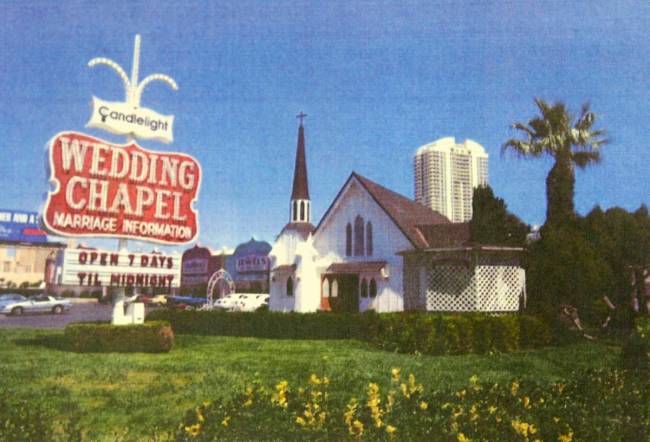
The visitors are on their way to the Candlelight Wedding Chapel, a onetime Strip institution, which now perches in a grove of trees here since it was acquired in 2004 and restored under Hall-Patton’s watch.
The woman says she was married in the chapel many moons ago, and she is among thousands who visit the little structure every year. Hall-Patton encourages her to send a wedding photograph and a copy of her license to become part of an exhibit the museum is building.
“Wow,” she says. “I’m going to do that.”
Time is running out on such chance encounters. Hall-Patton will soon retire from the beloved job he’s held for nearly three decades.
For Hall-Patton, the move is bittersweet, but he’s ready.
“I have done what I intended to do here,” he says, “finished all the major restoration projects.”
He’s proud of the public record of Clark County history the museum has amassed, including one of his favorite artifacts — a Southern Paiute bow and arrow collected in the Las Vegas Valley in about 1900, a piece of sinew-backed wood that shows the sophistication of early Native Americans here.
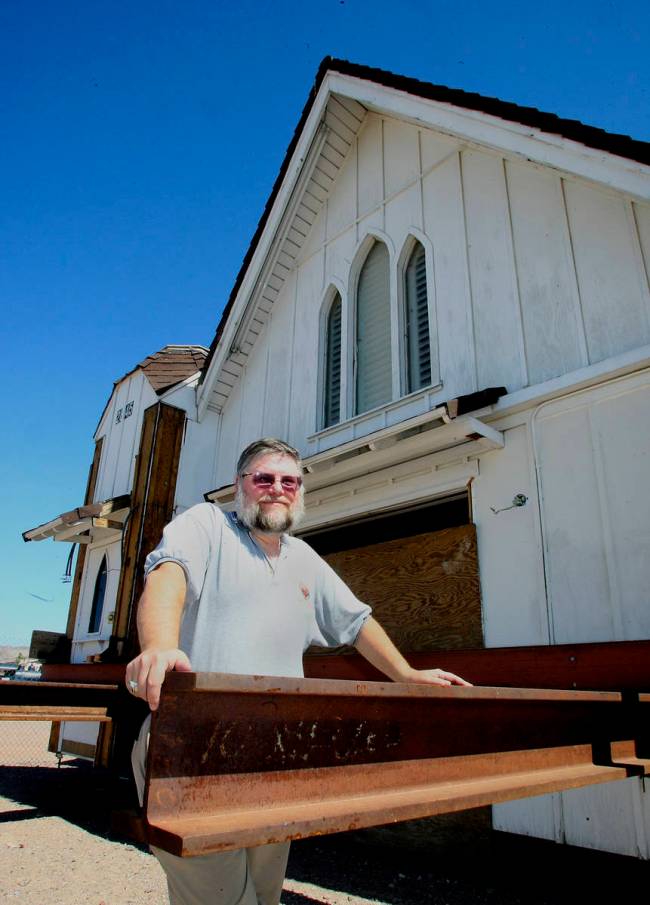
That sums up Hall-Patton’s creed for local residents: Know your own local history because “if we don’t understand why something is the way it is and we change it, we may make old mistakes all over again.”
Oddly, his own favorite museum addition is a new storage facility complete with rolling shelves and fire protection. Because Hall-Patton believes his task is not just to display the county’s historical artifacts, but to protect them as well.
“As a museologist, you are responsible for the physical memories of your community,” he says. “And while not very sexy, a new storage facility is critical to that mission, a way to preserve the community’s memories for the next hundred years.”
Even in retirement, some things with Hall-Patton will stay the same. He’ll still be a talker, busier than two men his age. He’ll work on completing four books that include an autobiography, a humorous look at museum work, a second edition of “Asphalt Memories,” his 2009 book exploring the origins of area street names, and a book tentatively titled “This Day in Local History,” with an important event for each day.
There may even be a new television show in the works.
The Beard of Knowledge still will be recognized most everywhere he goes.
If you see him, say hello. And don’t be surprised when you’re told some character-filled backstory about the place where you live.
That’ll just be Mark Hall-Patton, lifelong geek who is obsessed with the past, stepping onto what he calls his newest “bully pulpit, to describe just how cool history really is.”






